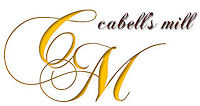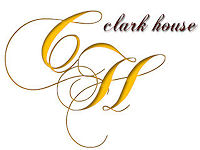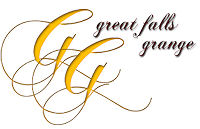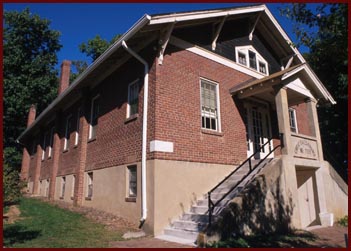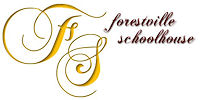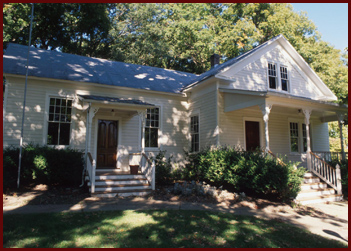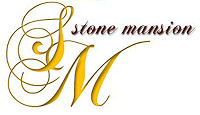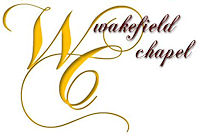Located in the wooded acres of Ellanor C. Lawrence Park, Cabell's Mill has long been a unique setting for social occasions. Built prior to 1800 and operated as a mill until 1916, the property was purchased in 1935 by Ellanor Lawrence. She and her husband, David, founder of US News & World Report, transformed the old mill into a guest house and hosted many Washington notables, including Franklin and Eleanor Roosevelt.
Read More >>
This Victorian farmhouse was commissioned by William Clark in 1902, and is the surviving architectural remnant of a large dairy farm operated by the Clark family for over 50 years. Today, the Clark House has been restored to its original graceful exterior.
Read More >>
Listed on the National Register of Historic Places, this public assembly hall was built in 1929, a product of the Grange Movement which swept rural America shortly after the Civil War. The Grange was built as a symbol of commitment to community involvement and progress, and has been a meeting and special event site throughout its history.
Read More >>
Built in 1890 by Scots immigrant John C. Hunter, Hunter House began as a small frame farmhouse. Over the years, the house was enlarged, but still retains much of its original character. After Prohibition, the house and surrounding grounds were bonded as Distillery No. 4, and produced "Virginia Maid" wine.
Read More >>
This site, listed on the National Register of Historic Places, dates back to 1889. It was originally a one-room schoolhouse, but in 1911 it doubled in size when the Floris Elementary Schoolhouse was moved from its location in what is now Frying Pan Park and attached to the west side of the building. Over the years, the schoolhouse has served as a school, junior Grange, library, bank, post office and private residence.
Read More >>
In 1780 Walter Brooke, a commodore of the Revolutionary War Navy of Virginia, friend of George Washington, and first cousin to George Mason, built a house just off the Kings Highway which he called "Retirement." That house is now known as Stone Mansion. A major renovation in the 1940s enlarged and modernized the house, added two wings, a stone facade, and an elegant two-story colonnaded front porch.
Read More >>
Wakefield Chapel was built in 1899 on land donated by local sawmill owner, Oliver Besley. The chapel was named for its first local preacher, the Reverend E. W. Wakefield, a colorful figure in Virginia Methodism and a Union Officer during the Civil War. The building served as a community church until 1951, and was later turned over to the Park Authority to be preserved for future generations.
Read More >>
For additional information, contact us.


